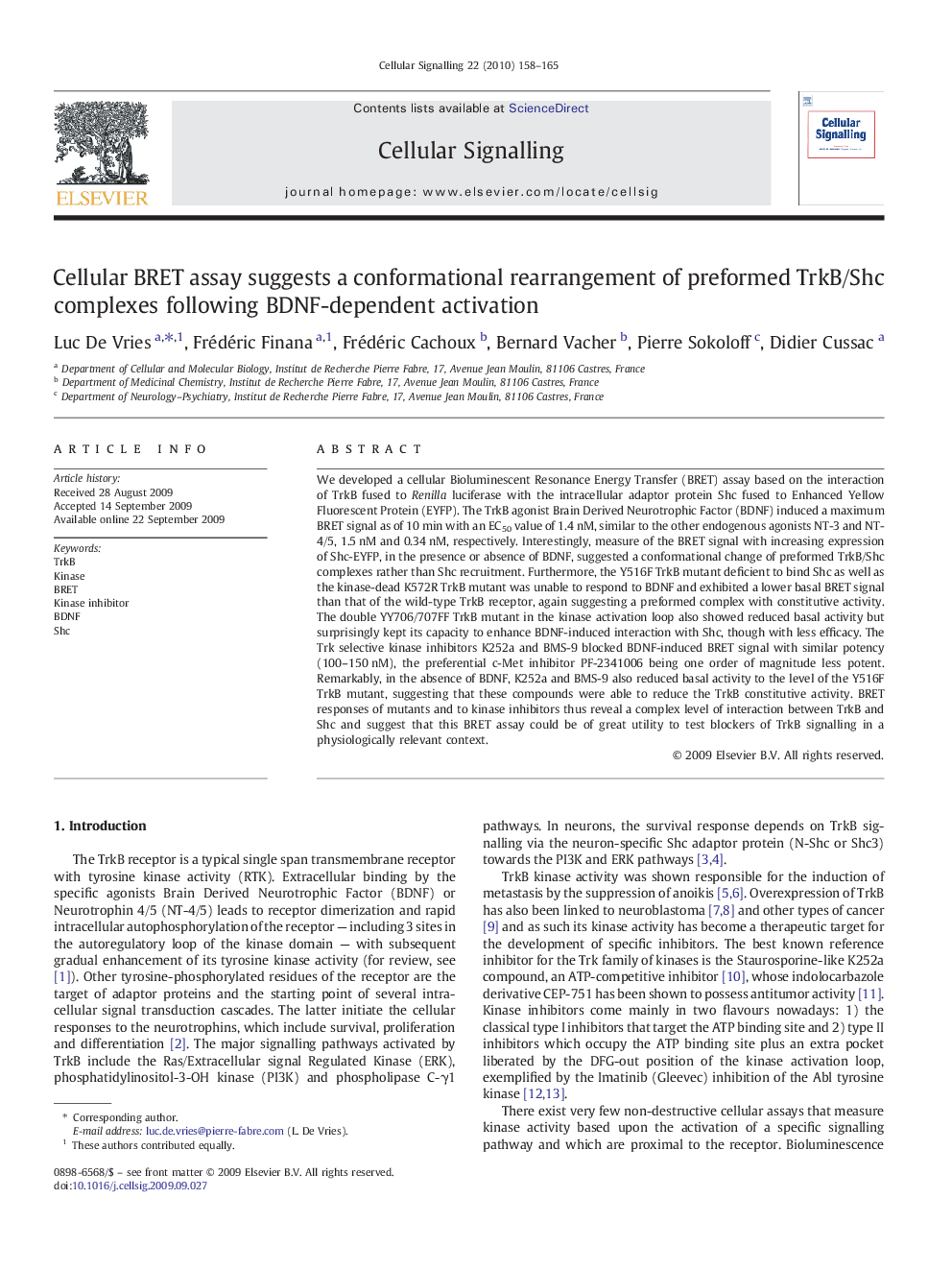| Article ID | Journal | Published Year | Pages | File Type |
|---|---|---|---|---|
| 10815799 | Cellular Signalling | 2010 | 8 Pages |
Abstract
We developed a cellular Bioluminescent Resonance Energy Transfer (BRET) assay based on the interaction of TrkB fused to Renilla luciferase with the intracellular adaptor protein Shc fused to Enhanced Yellow Fluorescent Protein (EYFP). The TrkB agonist Brain Derived Neurotrophic Factor (BDNF) induced a maximum BRET signal as of 10Â min with an EC50 value of 1.4Â nM, similar to the other endogenous agonists NT-3 and NT-4/5, 1.5Â nM and 0.34Â nM, respectively. Interestingly, measure of the BRET signal with increasing expression of Shc-EYFP, in the presence or absence of BDNF, suggested a conformational change of preformed TrkB/Shc complexes rather than Shc recruitment. Furthermore, the Y516F TrkB mutant deficient to bind Shc as well as the kinase-dead K572R TrkB mutant was unable to respond to BDNF and exhibited a lower basal BRET signal than that of the wild-type TrkB receptor, again suggesting a preformed complex with constitutive activity. The double YY706/707FF TrkB mutant in the kinase activation loop also showed reduced basal activity but surprisingly kept its capacity to enhance BDNF-induced interaction with Shc, though with less efficacy. The Trk selective kinase inhibitors K252a and BMS-9 blocked BDNF-induced BRET signal with similar potency (100-150Â nM), the preferential c-Met inhibitor PF-2341006 being one order of magnitude less potent. Remarkably, in the absence of BDNF, K252a and BMS-9 also reduced basal activity to the level of the Y516F TrkB mutant, suggesting that these compounds were able to reduce the TrkB constitutive activity. BRET responses of mutants and to kinase inhibitors thus reveal a complex level of interaction between TrkB and Shc and suggest that this BRET assay could be of great utility to test blockers of TrkB signalling in a physiologically relevant context.
Related Topics
Life Sciences
Biochemistry, Genetics and Molecular Biology
Biochemistry
Authors
Luc De Vries, Frédéric Finana, Frédéric Cachoux, Bernard Vacher, Pierre Sokoloff, Didier Cussac,
